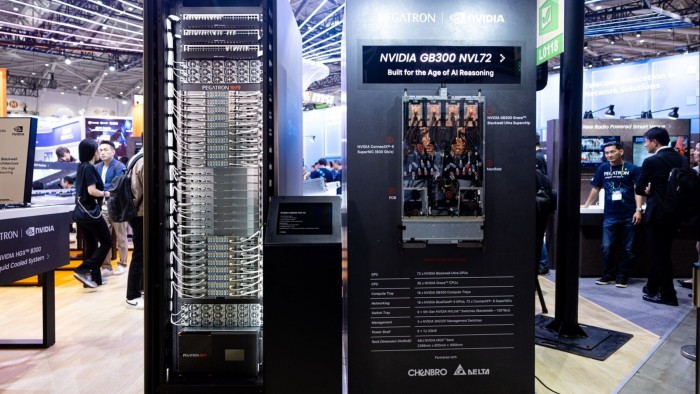Unlock the Editor’s Digest for free
Roula Khalaf, Editor of the FT, selects her favourite stories in this weekly newsletter.
To a hammer, everything looks like a nail. To a maker of chips that power artificial intelligence, everything looks like a “token”. That is the industry lingo for the units of information an AI model takes in and spits out. Nvidia’s founder Jensen Huang believes the world is on the cusp of a token explosion. His company’s $3.3tn market capitalisation depends on it.
Nvidia reported $44bn of revenue in the three months that ended in April, 69 per cent higher than a year earlier, and more than analysts had expected, according to LSEG. The company remains the biggest beneficiary of the AI boom, with scant competition when it comes to state-of-the-art chips — reflected in a 71 per cent gross margin.
That is not without hiccups. Nvidia took a $4.5bn writedown as a result of export curbs that have frozen it out of China, a market the company thinks could have represented $50bn of annual revenue. Nvidia had already been forced by the White House to sell only a lesser version of its AI chips to the People’s Republic. The writedown would have been bigger had Nvidia not managed to re-use unsold parts elsewhere.
Fortunately, where a door closes, a window opens. Sales of the company’s new Blackwell AI chips are expanding, seemingly faster than expected. Morgan Stanley analysts, for example, had expected that the current quarter ending in July would bring in $43.5bn of revenue, after losing $5bn in forgone shipments to China. Instead, the company says it expects $45bn, even after stripping out a larger $8bn of lost sales.
Moreover, a new wave of AI “factories” is springing up to fill a China-shaped hole. Big tech companies from Alphabet to Oracle were already planning mammoth data centres, and now governments are getting on the act. Saudi Arabia, the United Arab Emirates and Taiwan are all piling into state-backed “sovereign” AI. Huang is travelling to Europe next week, a trip that may produce more grand pronouncements.
Then there is the token growth — meaning yet more chip demand — that comes from companies finding practical uses for increasingly complex models. Data centre construction already added 1 percentage point to US GDP in the first quarter, strategists at Apollo Global Management note. The launch of “reasoning” bots that think, check and double-check before answering can end up using 1,000 times as many chunks of data per query than in simpler, earlier AI models, Huang argues.
Will they all use Nvidia chips to do so? For now, it’s pretty much the only game in town. Closest US rival AMD musters just one-sixth the revenue. Cerebras, an ambitious Abu Dhabi-backed upstart, is starting from a low base. And that fat gross margin gives Nvidia plenty of firepower to compete on price, should that become necessary. If the tokenisation of everything keeps up its current pace, Nvidia has much further to run.


